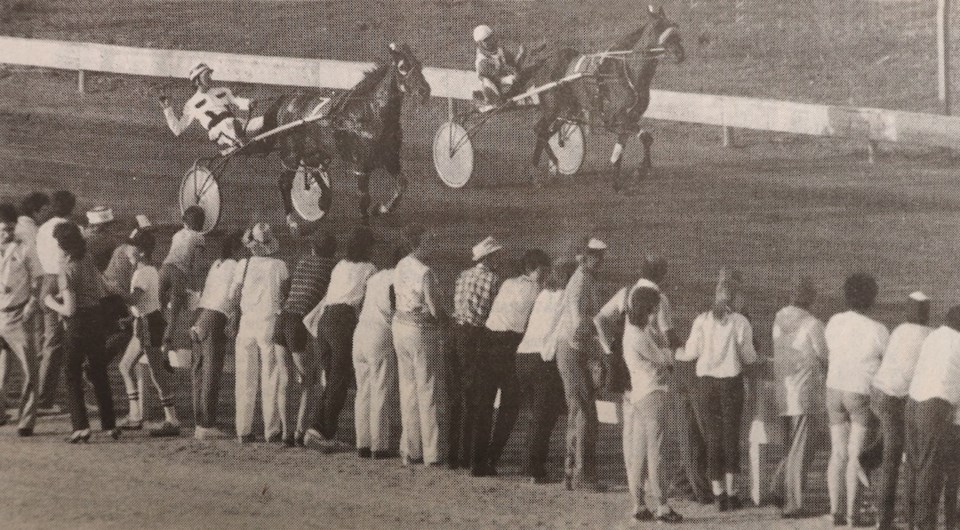While the Grandstand has stood since 1958, the events that it has allowed people to watch have changed and evolved steadily over the years, as the fair changed to reflect the ever-changing audience expectations in the region. Standardbred harness racing, for example, came back to the Saskatchewan Stampede and Exhibition in Yorkton in 1985. Before 1985, it was absent from the event for 12 years.
The return was a success 35 years ago, with a total of $42,294 in betting over three days of racing. That was smaller than other meets on the established circuit in Manitoba, admitted spokesperson Dave Farrell in the July 10, 1985 edition of Yorkton This Week, but it was also a good start for the first run of the horses in over a decade. The most important part was that betting kept increasing, with the third day of racing also being the most successful. The plan at the time was to get a fuller card in future years to get more betting.
With betting being relatively new in the city, there were plenty of people willing to talk their strategies for success. Kathy Bell reported on those different strategies, whether employed by first time betters or those that had been at it for years.
Orville Shaw, who also had horses in the race and bet an average of $400 to $700 per meet, shared a complex betting system. He checked the horse’s times in the last few starts, the length of the track and the post position. Of course, being in the paddock also gave him an advantage, as he was around drivers and horses at the same time. He also avoided all odds of 2-1, given the lack of a payoff.
And for all this he also said he didn’t always win, saying that “the ones that say they win all the time are fibbing.”
Others, such as a man named Norm, used a system of speed indexing, averaging first quarter and last quarter times in their last three starts.
That said, not every person putting down cash had a complex system for deciding on their bets. Ed Osterman of Vancouver had never gone to the horse track before, and picked based on “what looked and sounded good,” since the numbers in the program didn’t mean anything. Ethyl Stratychuk picked based on her maiden name. Her system was as good as any, since she also won.
The only constant among betters was that none of them viewed it as a reliable way to make money, but instead a way to give the racing some stakes and make it a bit more fun to cheer on and watch.
In keeping with the theme of ever-changing interests of the fair, Craig Burkell with the Yorkton Exhibition Association spoke to Yorkton This Week about taking a ‘long, hard look’ at the entertainment on offer, suggesting that they might move away from an annual rodeo and tractor pull, as the audience interest in those activities was waning. That eventually happened, of course, and the fair in 2019 was a very different assortment of events than the ones in 1985, without a rodeo or tractor pull in the mix.



